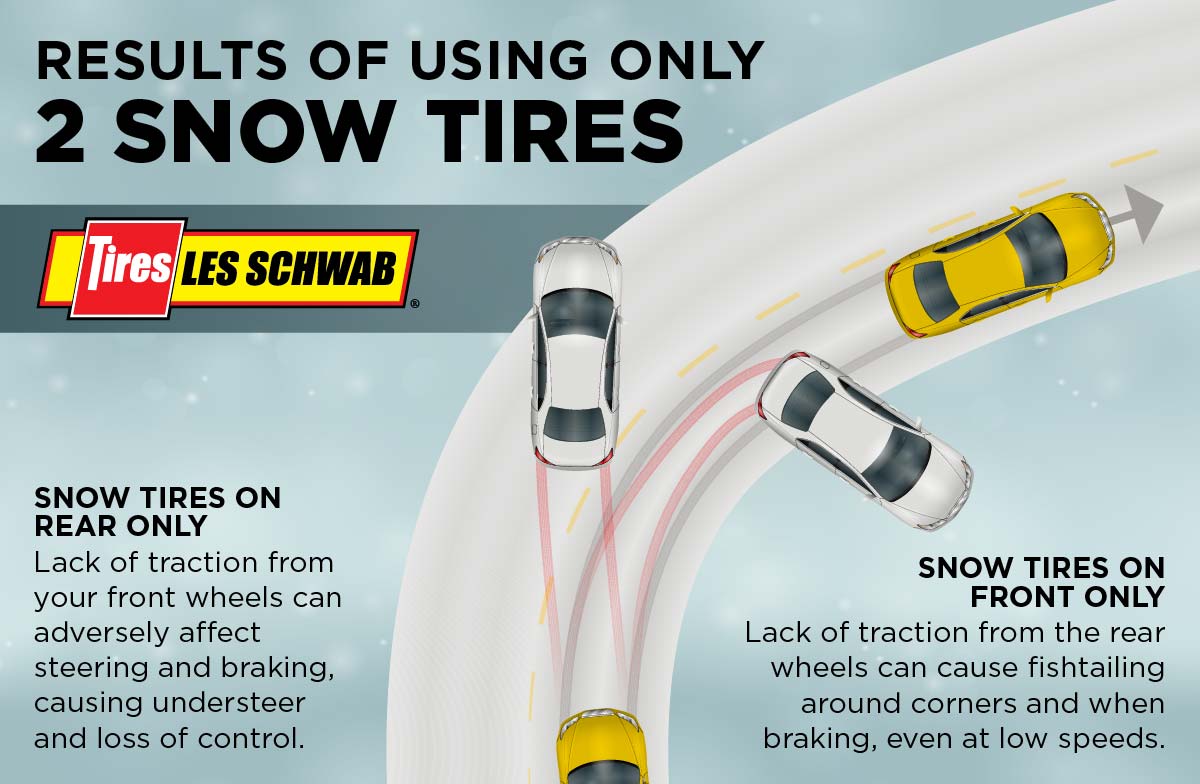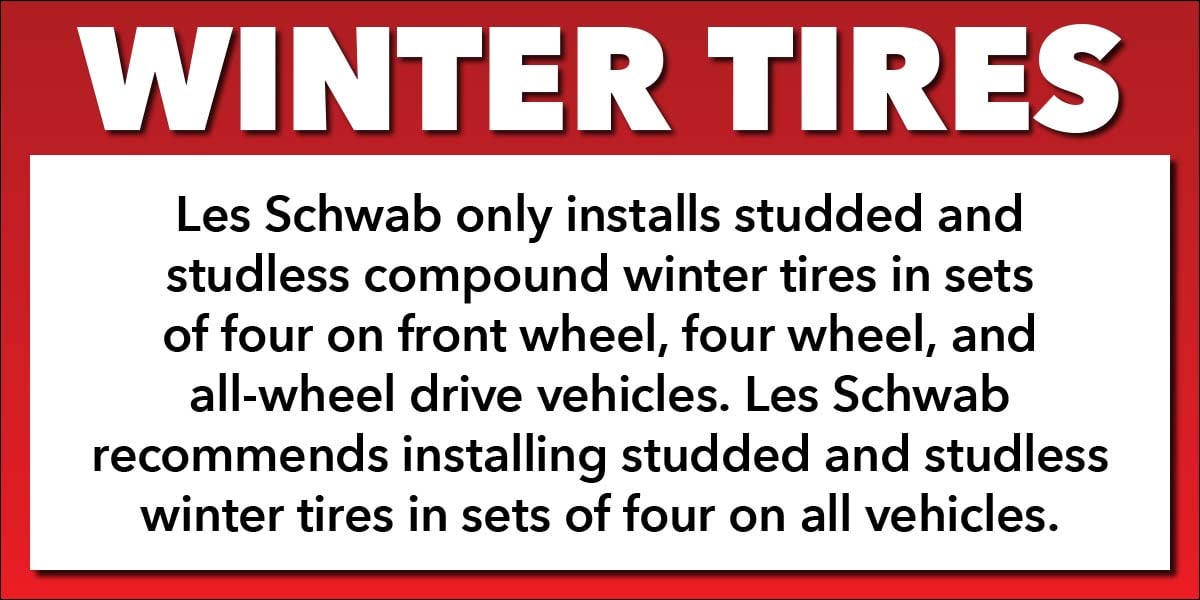-
Winter Driving Tips: The Dangers of Using Just Two Snow Tires
When driving in winter conditions, including ice and snow, staying in control and on the road is the top priority that starts with equal traction on all four tires. Installing snow tires on just the front or back of your vehicle won’t do the job, and could put you and your family in danger. Here’s why it’s important to install snow tires on all four wheels before facing winter’s fury.
Is it Okay to Put Snow Tires on the Front Only?
The short answer is no. Your vehicle might have front-wheel drive, but installing snow tires on the front and not all four wheels could end with you oversteering or fishtailing around corners or when applying the brakes in certain weather conditions — even at low speeds. Essentially, your back end will spin around, facing the front of your vehicle in the wrong direction. This can be especially bad if you’re out of control around a mountain corner and sliding into oncoming traffic.
Why does this happen? Even if there is no power to the back wheels, they still play a vital role in cornering and braking. All-season tires aren’t designed for cold weather and harden up when temperatures near freezing. Because they’re harder and have less traction, they easily slide on the snow and ice. Winter tires are designed for the cold and stay softer in low temperatures, helping provide grip.
Is it Okay to Put Snow Tires on the Back Only?
Again, the answer is no. Mostly. While it’s not recommended, the only time this could work is on rear-wheel-drive only vehicles. Even in these cases, we still recommend four matching snow tires for optimal performance. Anything else, including 4x4s, front-wheel drive, and all-wheel drive vehicles should have a full set of snow tires for best traction. Installing a set of snow tires on just the back wheels can easily cause your vehicle to understeer.
Why does this happen? When the front wheels have no traction it can become difficult to steer and stop. At that point, your front wheels are only helping guide your vehicle. Where you end up on the road is anyone’s guess. Additionally, installing snow tires on the rear only can cause anti-lock brakes and electronic traction control systems to malfunction.

Get Your Tire Chains and Snow Tires at Les Schwab
The weather can shift and worsen quickly in the West. That’s why it’s a good idea to have a full set of snow tires and carry traction devices for your vehicle. Stop by your local Les Schwab for expert advice on the right tires and chains for your car or truck. Check out our article How to: Choose Snow Tires for advice on finding the right snow tires for your needs.

-
Winter Driving Tips: Top Safety Reminders
There are always a million things to do when you’re heading out for the weekend. But planning ahead for winter driving can really pay off. All it takes is a few safe driving tips and checklists.
- Don’t use cruise control on slick surfaces. When it’s raining or snowing, cruise control can spin your tires and send your vehicle out of control.
- Create a winter driving safety kit. Already have an ice scraper for your windshield? Congratulations! You’re almost there. Here's a quick list of other items you may want.
- Learn how to drive on ice and snow with AAA.Whether you grew up driving in the winter or not, it’s always good to refresh your skills with these easy-to-understand tips.
- Print our before-you-go checklist. These quick infographics list out everything you’ll need for your winter drive.
- Know what to do if you get stuck in the snow. You might be one of the lucky few who never gets stuck, but, to be prepared, check out these helpful tips.
Be Ready for Any Weather
Even if the roads are clear when you head to work, they can be covered in snow and ice on the way home. The same goes for any weekend away, driving up to the slopes, over the passes, or through the canyons. Be prepared by getting your vehicle winter ready. That includes checking your tire pressure, tread, tires and devices.
SHOP WINTER TIRES -
The Essential Summer Road Trip Checklist
-
Check all lights, including emergency flashers and trailer lights.
-
Get tires inspected for wear and proper inflation. Don’t forget to check your trailer tires and make sure your spare is in the trunk.
-
Make sure your wheels are aligned. You could damage your tires if they’re not.
-
Have your shocks and struts looked at, especially if you’re planning on traveling rough roads.
-
With a cool engine, check radiator fluids (coolant reservoir full). With summer driving comes a higher risk of your engine overheating.
-
Test your A/C.
-
Check all other fluids: brake, transmission, power steering, windshield washer.
-
Inspect belts and hoses for damaged rubber and loose connections.
-
Have brakes checked, including trailer brakes.
-
Change wiper blades if needed.
-
Removable roof racks, back-end cargo carriers and bike racks:
-
Look for worn parts.
-
Make sure racks are properly secured.
-
Remember to not exceed the manufacturer’s load rating.
-
Load luggage and gear inside your vehicle with safety in mind.
-
Pack heavier items first and toward the center.
-
Don't stack too high, for driver’s line of sight and so items don’t shoot forward at a hard stop.
-
Distribute weight evenly to keep vehicle balanced.
-
Verify your roadside assistance policy is current, and have the number or app handy.
-
Charge your phone and don’t forget your charger.
-
Carry a first aid kit, a flashlight or headlamp, and extra water in case you’re stranded in the heat.
-
Check weather on your route.
-
Get a lot of the above done FREE with a pre-trip safety check at Les Schwab Tires.